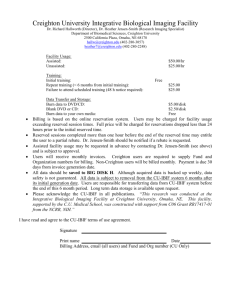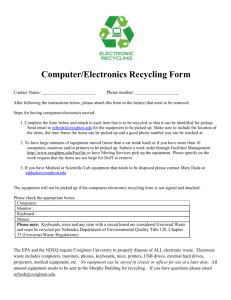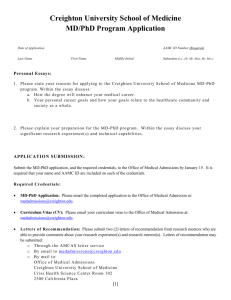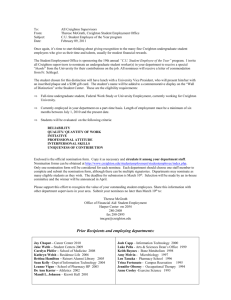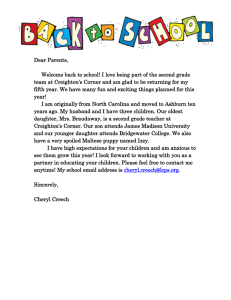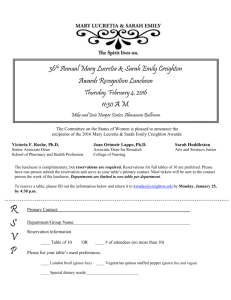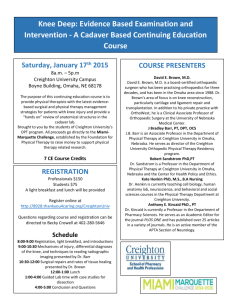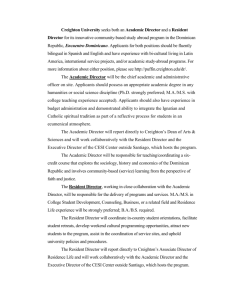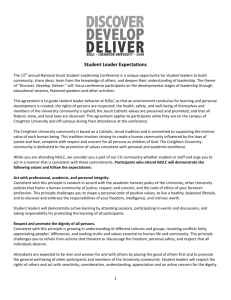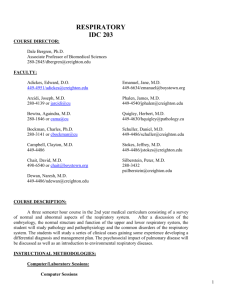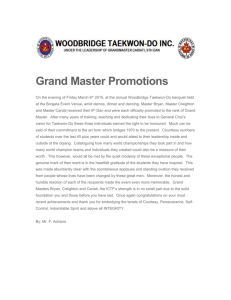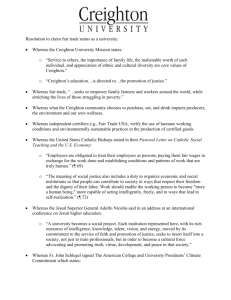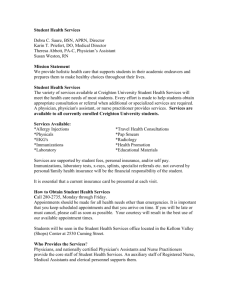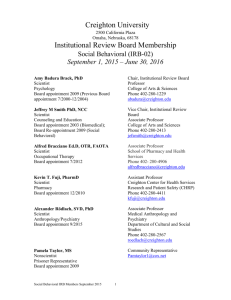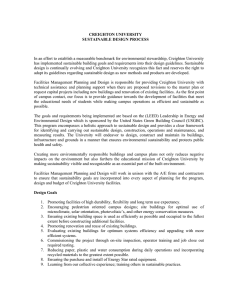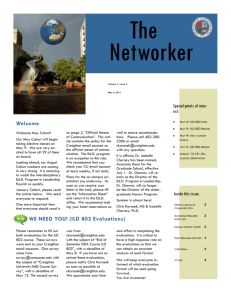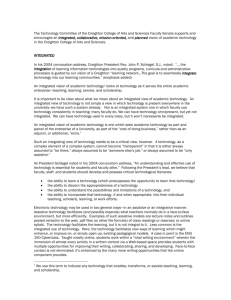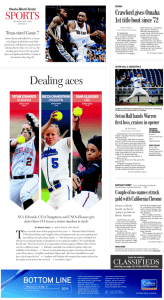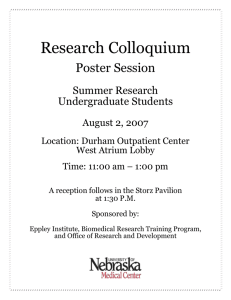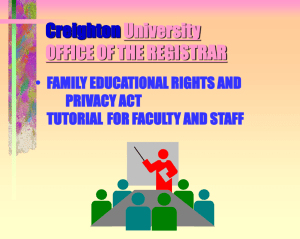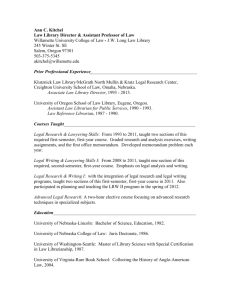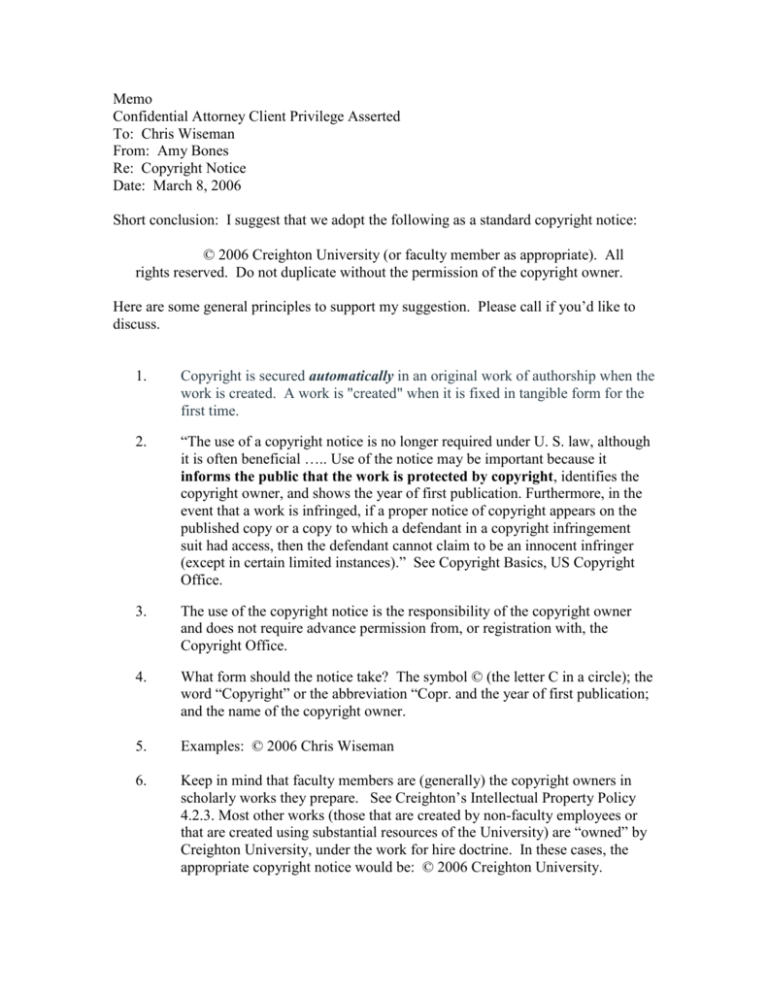
Memo
Confidential Attorney Client Privilege Asserted
To: Chris Wiseman
From: Amy Bones
Re: Copyright Notice
Date: March 8, 2006
Short conclusion: I suggest that we adopt the following as a standard copyright notice:
© 2006 Creighton University (or faculty member as appropriate). All
rights reserved. Do not duplicate without the permission of the copyright owner.
Here are some general principles to support my suggestion. Please call if you’d like to
discuss.
1.
Copyright is secured automatically in an original work of authorship when the
work is created. A work is "created" when it is fixed in tangible form for the
first time.
2.
“The use of a copyright notice is no longer required under U. S. law, although
it is often beneficial ….. Use of the notice may be important because it
informs the public that the work is protected by copyright, identifies the
copyright owner, and shows the year of first publication. Furthermore, in the
event that a work is infringed, if a proper notice of copyright appears on the
published copy or a copy to which a defendant in a copyright infringement
suit had access, then the defendant cannot claim to be an innocent infringer
(except in certain limited instances).” See Copyright Basics, US Copyright
Office.
3.
The use of the copyright notice is the responsibility of the copyright owner
and does not require advance permission from, or registration with, the
Copyright Office.
4.
What form should the notice take? The symbol © (the letter C in a circle); the
word “Copyright” or the abbreviation “Copr. and the year of first publication;
and the name of the copyright owner.
5.
Examples: © 2006 Chris Wiseman
6.
Keep in mind that faculty members are (generally) the copyright owners in
scholarly works they prepare. See Creighton’s Intellectual Property Policy
4.2.3. Most other works (those that are created by non-faculty employees or
that are created using substantial resources of the University) are “owned” by
Creighton University, under the work for hire doctrine. In these cases, the
appropriate copyright notice would be: © 2006 Creighton University.
7.
Should the notice go further? The samples above list the form of notice as
suggested by the Copyright Office. A number of copyright notices go farther,
and add the following statement (in addition to what you see above). “All
rights reserved. Do not duplicate without permission of the copyright owner.”
This may be a good statement to add (although it is not required).
8.
So, in sum, I suggest that we adopt the following as standard copyright notice:
© 2006 Creighton University (or faculty member as appropriate). All
rights reserved. Do not duplicate without the permission of the copyright owner.
9.
Final note about common law copyright: The doctrine of common-law
copyright was long statutorily preserved for unpublished works, but the 1976 revision of
the federal copyright law abrogated the distinction between published and unpublished
works, substituting a single federal system for that existing since the first copyright laws.

